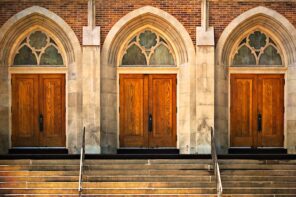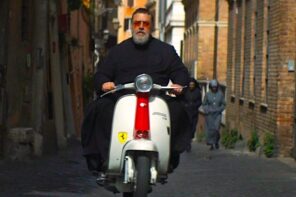Avenge, O Lord, thy slaughtered saints, whose bones/Lie scattered on the Alpine mountains cold… who kept thy truth so pure of old.
– John Milton on the 1655 slaughter of 1,700 Waldensians at the hands of the Catholic Duke of Savoy.
Late last month, Francis became the first pope to visit a Waldensian church in Turin, where he repented on behalf of the Catholic Church. It certainly wasn’t an isolated example of papal requests for forgiveness, which have been central to Vatican II rhetoric for half a century. In 1995 Pope John Paul II asked for forgiveness for the many persecutions which attended the Catholic Counter-Reformation and the early modern wars of religion, two years before that he made public penitence for the Church’s role in the African slave trade—in all there were over a hundred similar instances during his papacy. His successor Benedict XVI engaged in similar acts of ecumenical apology.
So why is Pope Francis’ visit with a relatively obscure 12th-century sect notable? There are two main reasons.
First, there’s the Waldensians’ historical importance as a precursor to the 16th century Protestant Reformation. Like the St. Bartholomew’s Day massacre of the century before or the many tales of martyrdom recounted in John Foxe’s Acts and Monuments the plight of the Waldensians would become a touchstone for many Protestants about their persecution at the hands of the Roman Catholic Church.
But it’s also the sect’s obscurity that makes for a notable reconciliation. Previous papal apologies to Galileo, or for the sack of Constantinople during the Fourth Crusade, garnered huge press attention.
This is not to cynically imply that those were public relations campaigns, but at the same time the Vatican is fully aware that a papal visit to a Waldensian church is not going to generate the same journalistic attention that those other examples did. With only a smattering of believers in Italy, South America and the United States (where they’re affiliated with the Presbyterian Church) it makes it that much more compelling as evidence of Pope Francis’ theological convictions, especially as they relate to the question of ecumenism.
In his address Pope Francis asked not just for forgiveness but said that wider Christian unity “does not mean uniformity.” The Pope’s namesake, St. Francis, was a contemporary of the Waldensian founder Peter Waldo, and in many ways they shared a similar theological perspective. Early Franciscans were often marked as heretics, and in many ways it’s a contingency of history that has one group gaining approval and the other being persecuted.
In addition, the past half century of historical scholarship has demonstrated how much of what we think of as the “Reformation” goes back well into the Middle Ages, whether among schismatic groups like the Hussites, the Brethren of the Free Spirit, and Waldensians; or within the Church itself with groups like the Beguines, the Beghards and indeed the Franciscans (all of whom also had their periods of persecution). Pope Francis’ Turin apology could be read as an acknowledgement of this historical complexity, and of the shared history between the Church and the many Protestant denominations.
His predecessor Pope Benedict XVI’s tenure was marked by a pivot towards Constantinople and Orthodoxy. Different popes of course orient themselves in different theological directions. Two years before the 500th anniversary of Luther’s 99 theses it will be interesting to see if Pope Francis pivots even further towards Wittenberg and Protestantism.




